Spain’s Top historic cities (that you should visit)
Spain’s history is everywhere you look. Tarragona was the Roman capital of the Iberian peninsula, Córdoba was the center of Muslim rule, Toledo is widely regarded as the most historic and multi-cultural city in Spain. By the 16th century, Spain had discovered America and become the Spanish Empire, one of the first global empires on the planet.
As a traveller interested in history and culture, where do you start?
This post gives you an overview of Spain’s history and covers some of the most interesting cities that you should visit on your quest of getting a better understanding of Spain’s legacy. Along the way, I’ll detail some of the country’s most incredible attractions, places that should be at the top of every traveller’s list.
A Brief History of Spain
Pre-Roman history involved many cultures. The Celts, the Lusitanians and the Tartessians dominated the interior. The Phoenicians, Carthaginians and Greeks each – at different stages in history – established trading settlements along the coasts. The city of Cádiz, for example, was founded by the Phoenicians around 1,100 BC and is considered as the oldest city in Spain as well as one of the oldest in Western Europe.
The Romans landed in Spain around 218 BC, established a capital in Tarragona (then called Tarraco) and over the next 200 years took over the whole of Iberia. The end of Roman Spain came in around 460 AD when the Visigoths gained control. But the Romans left their mark: you’ll see their towers and an amphitheatre in Tarragona (a UNESCO World Heritage Site), an imposing Roman theatre in Mérida, an incredible aqueduct in Segovia and many Roman walls, bridges, baths, towers and mosaics throughout Spain.
The Visigoths ruled from around 460 AD to 710 AD. They originated from the Danube valley in Central Europe and soon established their capital in Toledo. The time of Visigoth rule was marked by civil wars (they’ve often been characterized as destructive barbarians) and the conversion of their subjects to Christianity.
The Moors invaded the Iberian Peninsula from North Africa in 711 AD and they soon established control of almost the entirety of the Iberian Peninsula (save for a small sliver along the north coast). They’ve left an incredible legacy all over Spain with the building of fortresses, palaces, mosques and baths. Their influence has been preserved in architecture, music, language and in the fruits, vegetables and cuisine they introduced (paella, for example, has its origins in Arab cuisine).
The ¨Reconquista¨ refers to the ¨reconquest of Spain¨ (and the whole of Iberia) by Christian forces. Zaragoza was taken by Christian forces in 1118, Córdoba in 1236, Valencia in 1238, Sevilla in 1248. The last push came after the Kingdoms of Aragon and Castile united forces with the marriage of Ferdinand II of Aragon and Isabella I of Castile in 1469 (they are known collectively as the ¨Catholic Monarchs¨ and are the two most consequential figures in Spanish history). In 1492, the last Moorish stronghold in Spain – Granada – was defeated. It marked the end of the Reconquesta, the 780-year struggle to end Islamic rule over the Iberian Peninsula.
The Catholic Monarchs, in the same year (1492) contracted Christopher Columbus to sail west and claim lands for Spain. The discovery of the New World led to Spain being the major power in Europe from the end of the 15th century to the mid-17th century (1492 to 1659 is often referred to as Spain’s Golden Age).
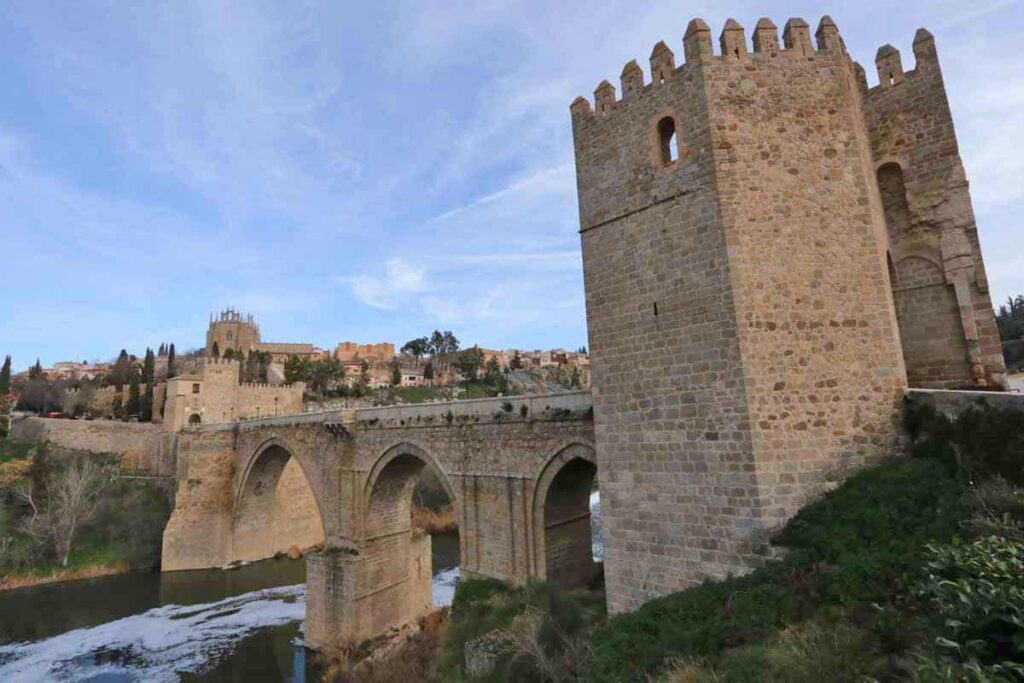
What cities should you visit?
Spain is the 2nd most visited country in the world. It had 15 cities classified as UNESCO World Heritage sites. So which to visit?
Whether travelling by bus, train or private plane (avion privado. The definition of luxury) here are my recommendations of a few cities you just can’t miss.
Córdoba
Córdoba has it all. Besides being a beautiful mid-sized city, it has some of Spain’s most impressive and most varied attractions.
Chief among them is the 331 m (1,086 ft) Roman Bridge. Built in the 1st century, it was part of the Via Augusta, the road that connected Rome to Cádiz. It was the longest and busiest road in Iberia and the bridge played an integral part as it was the only bridge crossing the Guadalquivir River (the 2nd longest river in Spain and the only major navigable river in Spain).
But the most famous attraction in Córdoba is Cordoba Mosque Cathedral. Built in 785 AD it is one of the world’s biggest mosques. It is absolutely breath-taking. But what makes it even more incredible is what the Catholics did when retaking Córdoba – instead of tearing it down (their usual practice), they built a Cathedral within the center of the mosque. So this is both a Cathedral and a Mosque. We’ve explored much of Spain and this is still the most incredible site we’ve seen.
Córdoba is also home to the Alcázar of Córdoba, the fortress/palace that built in 1328. It was the home of the Catholic Monarchs Isabella and Ferdinand and was the headquarter of the Inquisition in 1482 (the Alcázar’s main tower is known as the “Tower of the Inquisition”).
There’s more to see in Córdoba. It’s a city that absolutely can’t be missed.
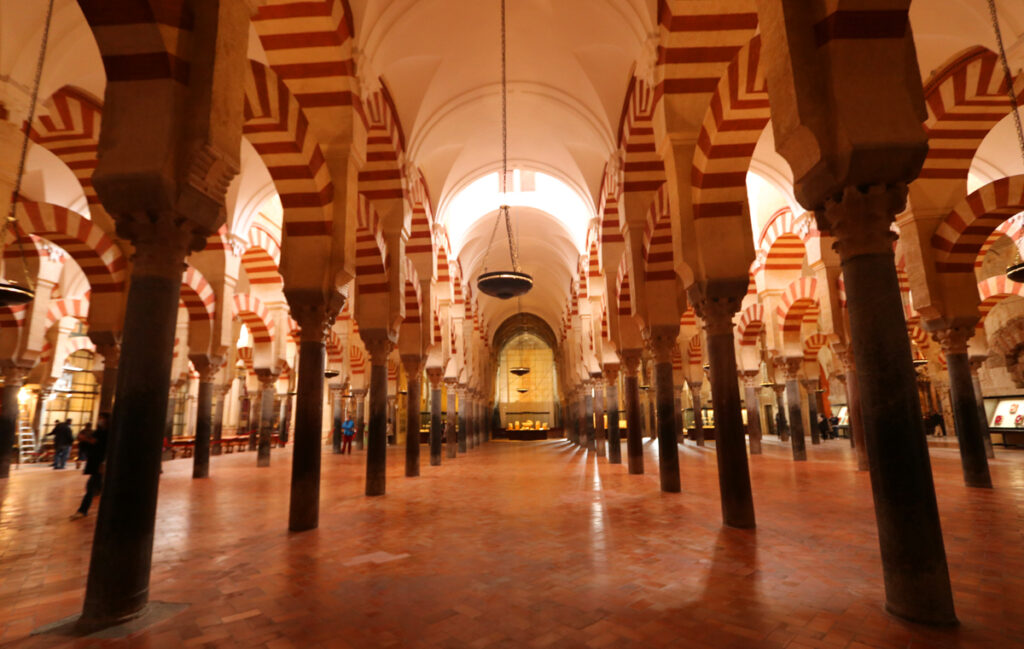
Toledo
Toledo is a famous city dating back to before the Romans. It is known as the “city of the three cultures”, a place where Christians, Muslims and Jews lived side by side. Toledo was also the capital of the Spanish Empire until 1560 when the Royal Court moved to Madrid.
Toledo’s Cathedral is one of Spain’s most beautiful cathedrals. The Monasterio de San Juan de los Reyes is incredible, it was built with the intention of being the mausoleum of Ferdinand and Isabella (they eventually chose Granada as their burial place after its reconquest in 1492). It has lots of attractions covering the different epochs of the city: a Visigoth column in the Iglesia del Salvador which is said to date from the 6th or 7th century, the “Mezquita” del Cristo de la Luz (one of the few surviving mosques of the city), a Jewish synagogue, Moorish walls, Catholic-era bridges…the city is full of history and you should not miss it.
More: Why Toledo should be on your Spanish itinerary

Segovia
A small, hilltop city that brings Disney movies to life, in fact the Alcázar (the fortress/castle that served as the primary residence of the monarchs of Castile) was one of the inspirations for Disney castles.
The Roman Aqueduct is one of Spain’s great highlights. Built by the Romans in the first century AD, it carried water from the Guadarrama Mountains to the center of town (a distance of 15 km). The most visibly impressive part of the aqueduct is the Aqueduct Bridge which spans almost 30 meters above Plaza Azoguejo, one of the town’s main squares.
The 3rd major site in Segovia is the Cathedral of Segovia. Built between 1525 – 1577, it is considered the last Gothic building in Spain (and some say in Europe).
There’s more to Segovia, it is one of the most charming cities in Spain.

Tarragona
If Roman history interests you, then you should visit Tarragona. As mentioned above, the city served as the Roman capital in Iberia for more than 600 years.
The Amphitheatre is one of the major highlights. It held over 15,000 spectators who came to watch gladiators and executions (think of the movie ¨Gladiator¨).
The Roman Circus was where chariot races were held and Tarragona’s is considered as one of the best-preserved in the Western World. The Praetorium Tower is connected to the racecourse by underground tunnels. From the roof of the tower you have an amazing view of the city, the amphitheatre and the impressive Cathedral.
On seemingly every corner there are Roman ruins. You’ll see city walls, aqueducts, and the remains of a Roman forum.
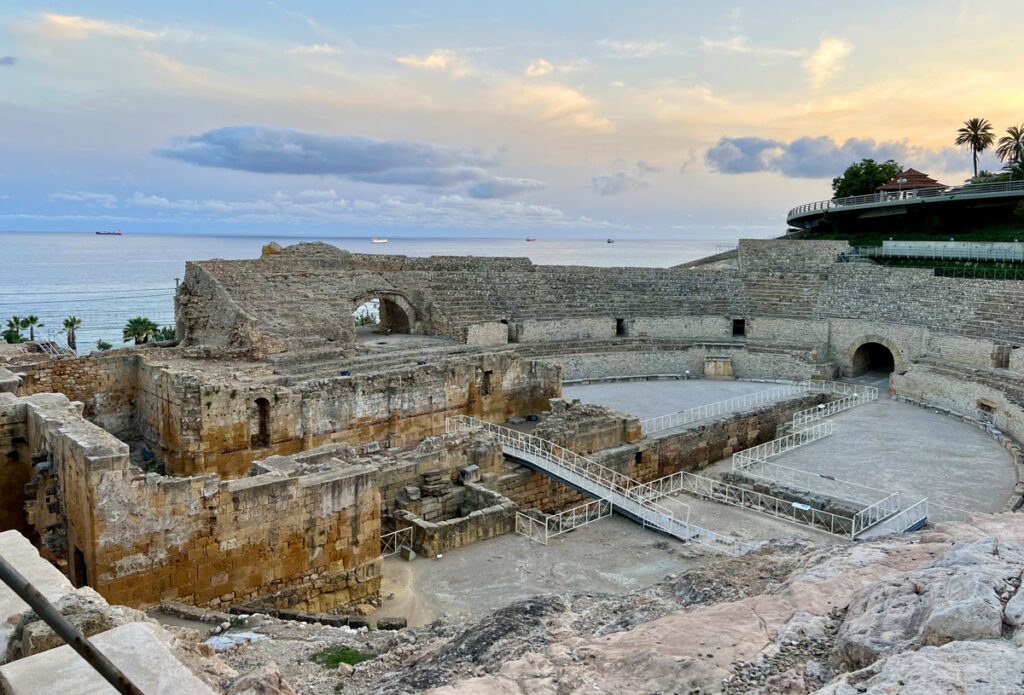
Granada
Granada, the last stronghold of the Muslim empire in Spain. Here you’ll see the incredible Alhambra, the palace/fortress of the Nasrid Dynasty. It is one of Spain’s most visited attractions, vying for top spot with Barcelona’s Familia Sagrada.
The Catholic Monarchs chose to make Granada home and you’ll see many riches around the city. Granada Cathedral, the Royal Chapel (which holds the bodies of Ferdinand and Isabella), the Cartuja Monastery, Basilica de San Juan de Dios, the Monastery of San Jerónimo and the Albaicin (the neighbourhood was where the Moorish population lived) should all be on your list.
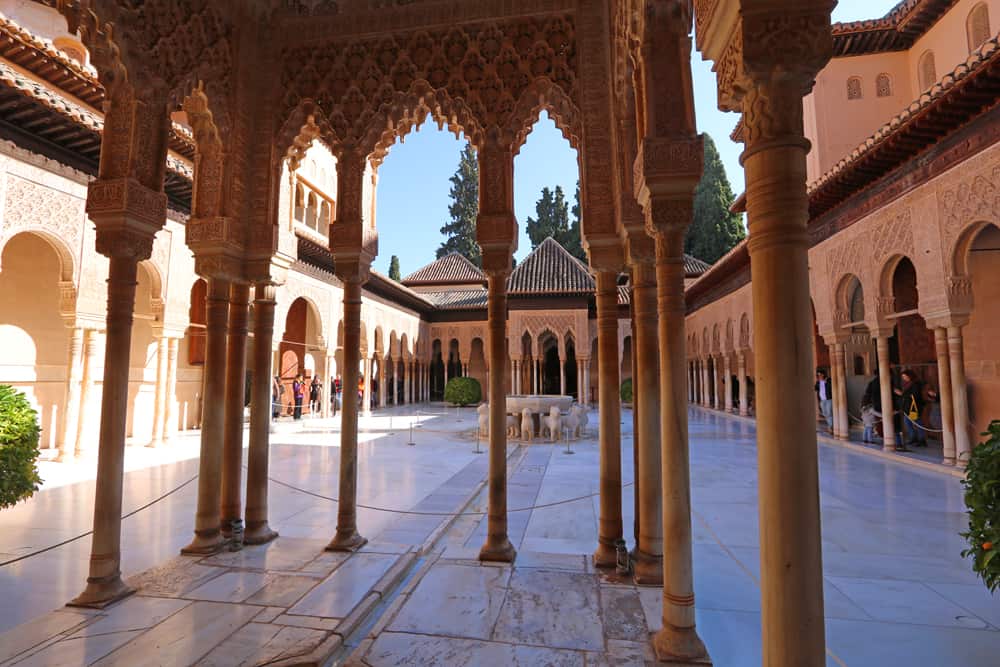
Salamanca
Known as the “Golden city” for the sandstone used in the construction of its buildings, it has the third oldest existing university in the world, one of the Top 10 cathedrals in Spain (it in fact has 2 cathedrals), and one of the most beautiful plazas in all of Spain.
Salamanca also has its own Roman bridge, thought to date back to the 1st century AD during the reign of Roman Emperor Trajan. It forms part of the Roman Silver Road that linked Merida (to the South) and Astorga (to the North).

Note: Castile and León have some incredible historic cities that don’t get a lot of foreign tourists. Besides Salamanca, visit León, Burgos and Ávila if you can.
I’ve missed a whole bunch of cities above. I haven’t mentioned Seville, one of Spain’s most beautiful cities, or Malaga which is a favorite of many visitors (with a mix of Roman, Moorish and Catholic highlights). There’s Cartagena on the coast which is one of Spain’s oldest cities (founded by the Carthaginians, later a Roman port) and Lugo in Galicia which has Roman-constructed walls encircling the entire historical center.
The point is, there’s a lot to see in Spain if you love history. The ones I’ve detailed are only a starting point in your quest of getting a better understanding of Spain’s legacy.
Related: How to plan a Trip to Spain
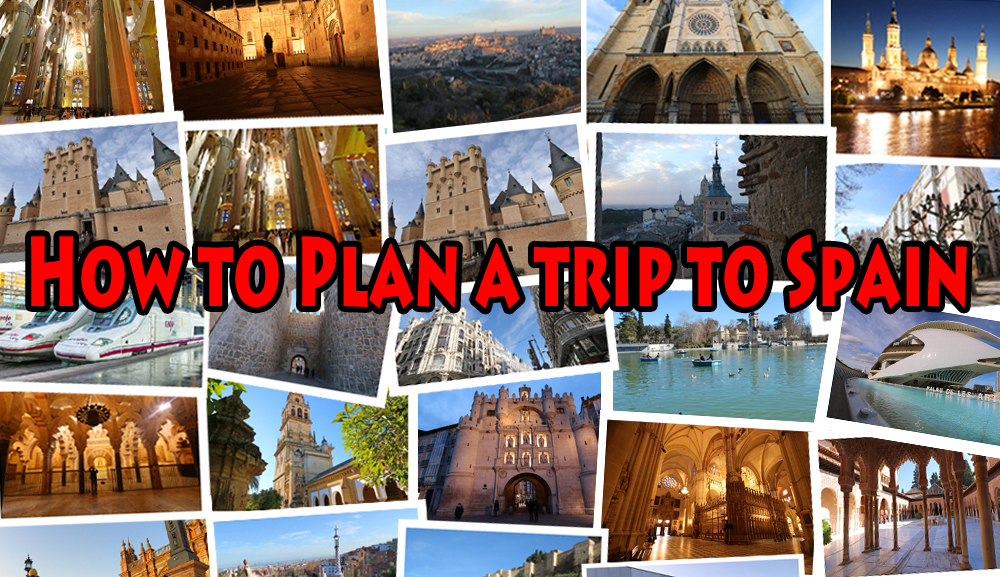

Leave a Reply